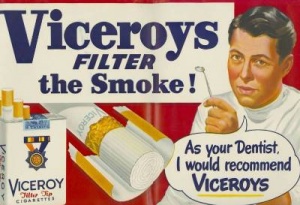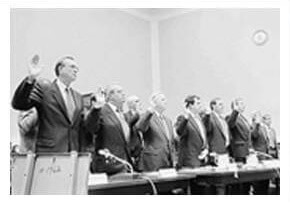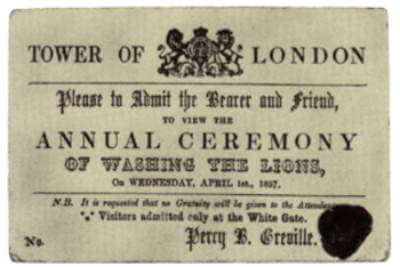National Sea Monkey Day
Today is National Sea Monkey Day, also known as Sea-Monkey Day. In 1957, entrepreneur Harold von Braunhut noticed that desiccated brine shrimp were able to survive for extended periods of time in a suspended state known as cryptobiosis.
The result was a novelty item called Instant Life that could be reconstituted and grown in water. It was a neat, slightly creepy trick which caused many children to wonder if spontaneous generation was possible, and, if so, what might be swimming around in their bathwater at any given time. The product required a rethink.
With the assistance of marine biologist Anthony D’Agostino, von Braunhut developed a type of brine shrimp that could more easily withstand shipping and hatch more successfully. He engaged cartoonist Joe Orlando to illustrate comic book advertisements and rebranded the shrimp as “Amazing Sea-Monkeys.”

Expectation…

…meets reality.
It may not surprise you to hear that sea-monkeys are not, in fact, monkeys. These tiny crustaceans don’t need the packet of “Mating Powder” included in kits because they can reproduce asexually when necessary. (That may help explain why they’ve been around for 100 million years.) They start life with one eye and grow two more. A female’s uterus can hold up to 200 eggs — don’t ask us who counted — and the male has two reproductive organs.
This was von Braunhut’s most financially successful invention, but not his only one. He held nearly 200 patents and was the creator of X-Ray Specs, Crazy Crabs, Amazing Hair-Raising Monsters, and the Invisible Goldfish, an empty bowl accompanied by the “100% guarantee” that no fish will ever appear. (The scope of the grift is breathtaking.)
He also designed the Kiyoga Agent M5 “Steel Cobra,” a pen-sized weapon that telescoped into a metal baton, marketing it as the most effective self-defense tool available without a license. Burt Reynolds used it to whip some bad guys in his 1981 movie, “Sharkey’s Machine.”
It soon attracted the kind of publicity its inventor preferred to avoid. In 1987, Richard Girnt Butler, chief of the Aryan Nations, then considered the country’s most dangerous white supremacist group, faced charges of plotting to murder federal officials and overthrow the U.S. government. He enclosed a Kiyoga brochure in a fundraising letter, stating that the “manufacturer has made a pledge of $25 to my defense fund for each one sold to Aryan Nations supporters.”
It was an outrageous claim that drew attention to von Braunhut. Butler soon confirmed to a reporter at the Spokane, Washington-based Spokesman-Review that the inventor was an old pal and “member of the Aryan race who has supported us quite a few years.”
The following year, The Washington Post revealed von Braunhut had helped purchase firearms for members of a Ku Klux Klan group in Ohio. It also reported that “the 62-year-old supporter of neo-Nazi groups was born and raised in New York City as Harold Nathan Braunhut, a Jew,” going so far as to track down a cousin who said he probably attended his bar mitzvah. Harold Nathan Braunhut added von to his name as an adult in order to sound more Germanic.
According to the Los Angeles Times, rumors had swirled about von Braunhut’s ethnicity for years. Floyd Cochran, former spokesman for the Aryan Nations, called him a misfit with “a rather large nose for a person of the Aryan Nations,” adding, “He’d give long speeches about numerology and he’d make references to the pyramids. It just didn’t play very well.” No doubt his donations kept him in good stead. Cochran wasn’t informed how much von Braunhut contributed, but said Butler called upon him often.
Al Davis of Larami Limited, which held the Sea Monkeys license in 1988, stated he called von Braunhut after receiving calls from retailers and distributors worried that profits were funding racist groups. “When I called Harold on this,” Davis said, “he said something to me I find hard to believe to this day. ‘Al,’ he said, ‘Hitler wasn’t a bad guy. He just received bad press.'”
News clippings show von Braunhut attended the annual Aryan Nations Congress held in Idaho until at least 1995. He was often a featured speaker and was sometimes given the honor of lighting the ceremonial cross. In December 1995, von Braunhut, who claimed to be an ordained priest and often wore a clerical collar to Aryan Nations meetings, presided over the funeral of Betty Butler, the chief’s wife. Although he denied writing or distributing them, the return address for National Anti-Zionist Institute (NAZI) newsletters was the same P.O. box used to receive orders for Sea-Monkey kits.
Von Braunhut died in 2003 at the age of 77. His Sea-Monkeys remain a multimillion-dollar brand and have attracted headlines again. On April 15, 2016, the New York Times published an article about the protracted legal battle between his widow, Yolanda Signorelli, an actress best known for her role in the 1967 bondage film Venus in Furs, and Big Time, the company to whom she licensed certain rights a few years after her husband’s death.
The contract had specified that Big Time would buy the packets of critters from her in exchange for the right to package and distribute the product and supplies, such as aquariums and other add-ons. There was a provision that would allow it to buy her company, including the secret formula, for a one-time fee of $5 million upfront and $5 million more to be paid in installments.
In 2013, Big Time informed Signorelli that it considered its payments for the packets to have been a layaway plan, concluded that it owned the Sea-Monkeys franchise, and began importing knockoff brine shrimp from China. She sued for breach of contract. The case dragged on for many years, ending in an undisclosed settlement. We’ll never see the result — much like an invisible goldfish. Likewise, Instant Life, a three-part documentary series shown at the 2022 Sundance Film Festival, is unavailable to stream at this time.
And that, boys and girls, is the true story of how a bigot and his brine shrimp contributed to race hatred and the scourge of child labor in Asia.
Sources:
The Sea Monkeys and the White Supremacist, Los Angeles Times
The Battle over the Sea-Monkey Fortune, New York Times
Hitler and the Sea-Monkeys, Southern Poverty Law Center
Instant Life, Sundance Festival Blog
Contrasts of a Private Persona, Washington Post

 Today is Vast Wasteland Day. On May 9, 1961, Federal Communications Commission (FCC) Chair
Today is Vast Wasteland Day. On May 9, 1961, Federal Communications Commission (FCC) Chair 





